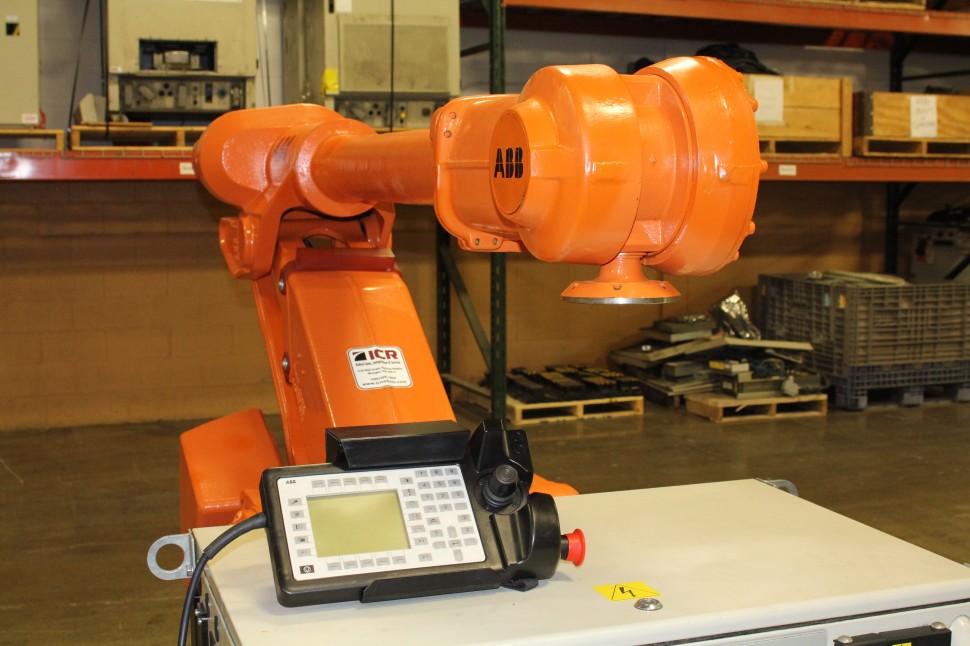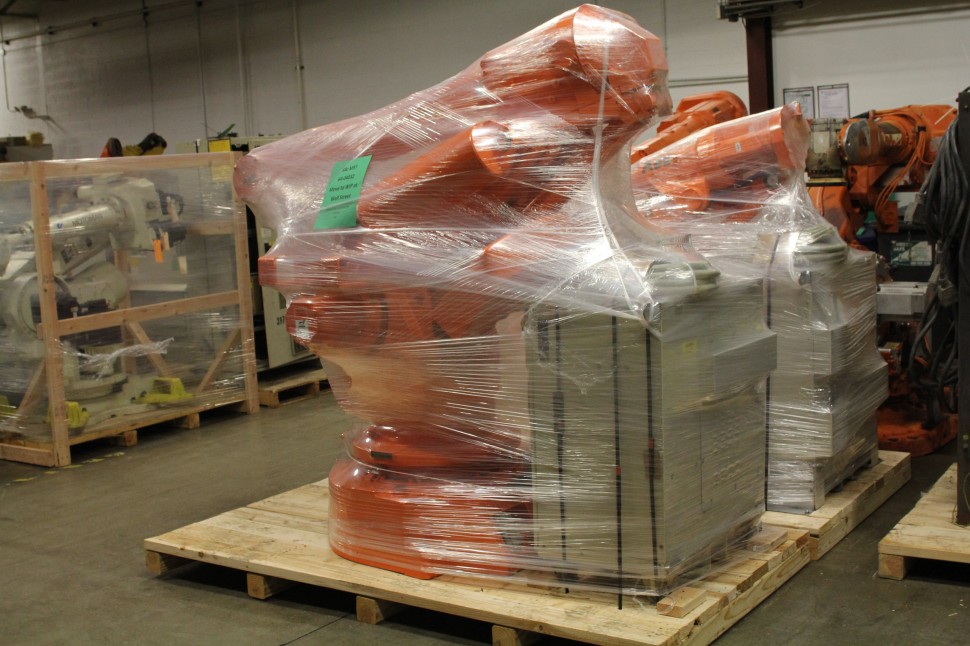Restore your robots
When a robot is unused or becomes unusable, it can become an expensive liability. Repairing and re-deploying an existing robot can save tens of thousands of dollars compared to buying new. Also, by repairing legacy robots, additional savings may be realized at the plant level with reduced engineering time and controls hardware cost when interfacing to existing systems. ICR goes to great lengths to understand the customers’ requirements and will configure the robot with the needed software and hardware options. Our engineering and integration team can design, fabricate and install robot end effectors (EOAT) or assist with integration if needed.

Robot Controller and Manipulator Refurbishment
Inspections
- Inspect exterior and interior of the robot controller cabinet for missing, broken or incorrect components
- Inspect all cables and connectors for the teach pendant
- Inspect for proper input voltage set-up
- Examine robot manipulator for missing, broken or incorrect components
- Check castings on the robot manipulator
- Assess robot manipulator for defective seals and oil leaks
- Inspect counter balancer
- Check hard stops and limit switches on the robot manipulator
- Inspect all connectors and cables for the robot manipulator
Validations
- Connect safety jumpers to be able to cycle robot without errors
- Apply power and check for proper “boot up” sequence
- Confirm teach pendant functionality with the robot controller and confirm all E-stops
- Test J3 connections (EE/CS/CP/Air/Gas, etc.)
- Check the robot manipulator for legible mastering marks or stickers
- Secure robot manipulator to robot controller test stand and attach appropriate test weight to confirm operability
- Install test program to exercise each individual axis on the robot manipulator
- Conduct grease and/or oil analysis on each axis
- Conduct backlash testing on each axis of the robot manipulator. Repairs performed if supplied report shows errors
- Run robot manipulator brake test, with a pass or fail result. Technicians perform brake repairs after a failed a test
- Install test program to exercise all robot manipulator axis points simultaneously
- Identify any potential abnormal vibrations occurring any axis or motion of the robot manipulator. Repairs performed if vibrations detected
Rebuild
- Clean inside and outside of robot controller cabinet, along with any cables/connectors
- Clean or change/replace fans within the robot controller
- Clean or change/replace batteries within the robot controller and label accordingly
- Remove and clean all circuit boards, and servo amps within the robot controller
- Switch filters within the robot controller
- Replace any missing hole cover plates on the robot controller
- Replace Axis Reducer / Gear Box grease per OEM specifications
- Grease robot manipulator along all axis cross roller bearings, bushings, and joint bearings
- Install new counter balance bushing kits on the robot manipulator
- Replace all belts for the robot manipulator
- Change batteries or battery pack for the robot manipulator, and label accordingly
- Paint both the robot manipulator and robot controller according to OEM specifications
- Adjust the robot manipulator over-travel limit switches as needed
- Conduct final run of robotic systems for a minimum of 8 hours under a full load
- Conduct infrared thermal scanning of bearings, motors and RV’s of the robot manipulator
Refurbish your robot
ICR technicians handle industrial robot refurbishment with precision care throughout the entire process. From the initial cleaning to the final coat of paint, the refurbishment process provides customers with a high-performing, dependable robot. When running a production line, safety is always a top concern. ICR’s technicians ensure each robot is reset to OEM specifications or greater after refurbishment.
Refurbishing a robot is more than painting and replacing the lubricant. Being the customer, you need to ask questions about the process and when time permits visit the facility offering the service. ICR welcomes visitations and technicians are always available to provide answers to all your questions.
Best Practices
Allowing an axis to run during a lubricant purge provides for a thorough grease exchange to occur. This process is far better than simply pumping grease in, until it’s clear at the exhaust port. We may use more grease than usual, but the end result allow more contaminates to be flushed out.
Let ICR re-deploy your robots
Our ICR Field Services team re-deploys industrial robots back into their respective production lines. We deliver robots safely and securely, install the robot, and train employees on basic programming and troubleshooting. ICR also offers tailored operations for production lines.







